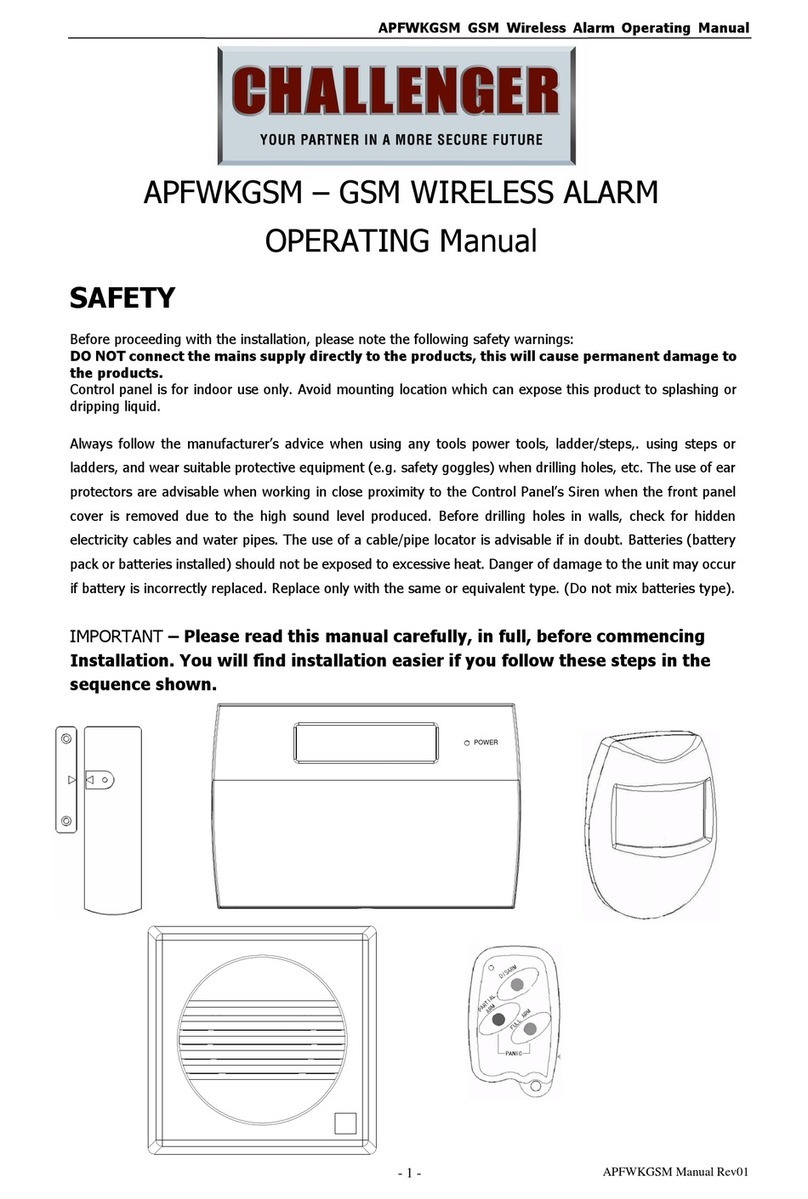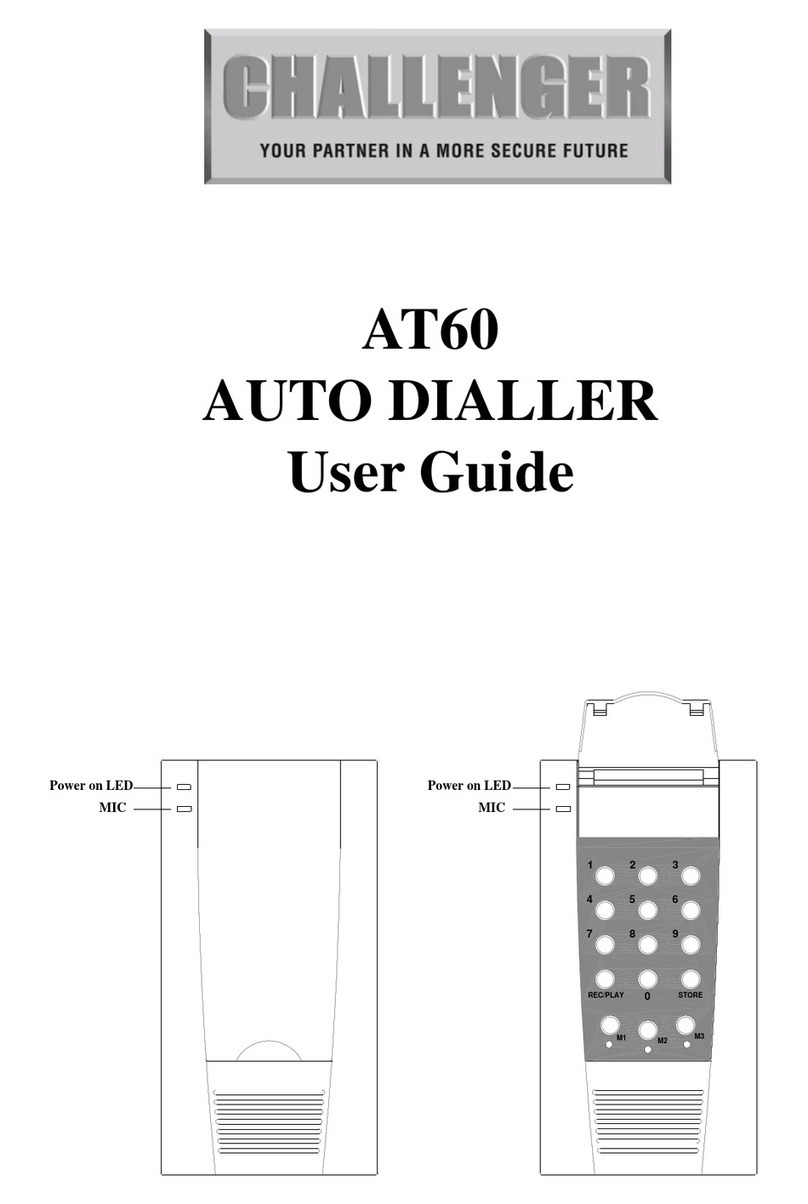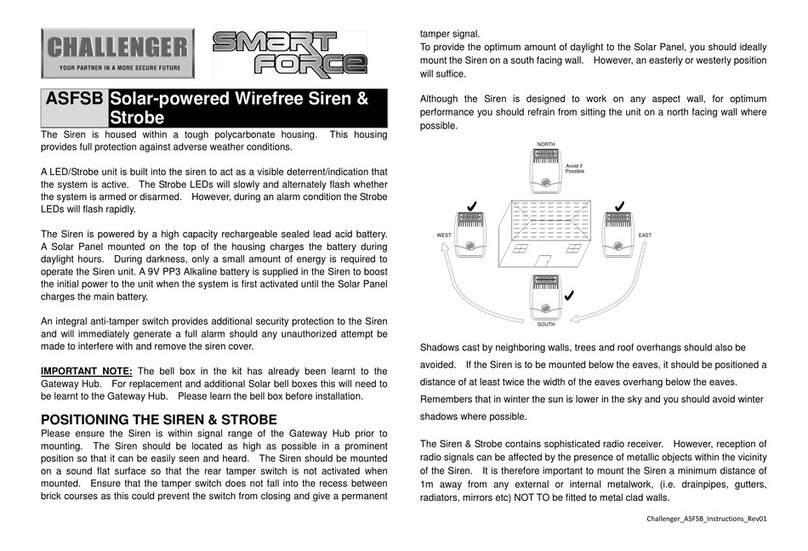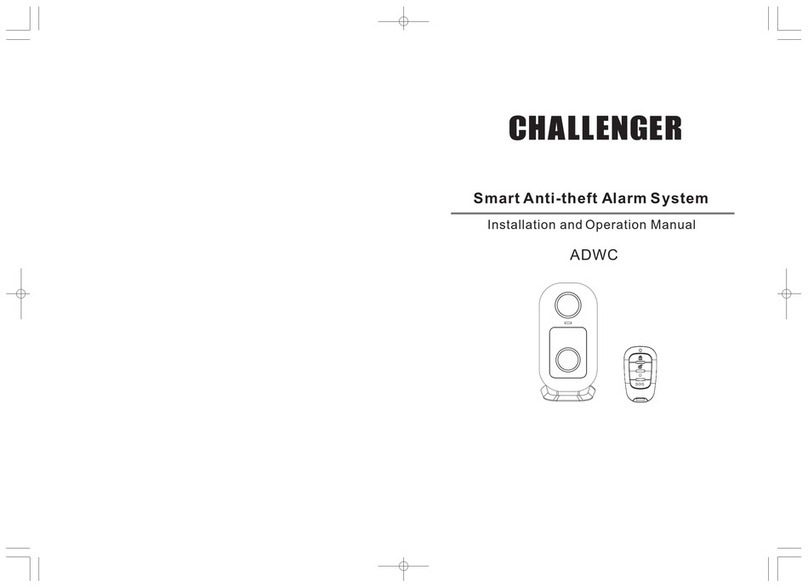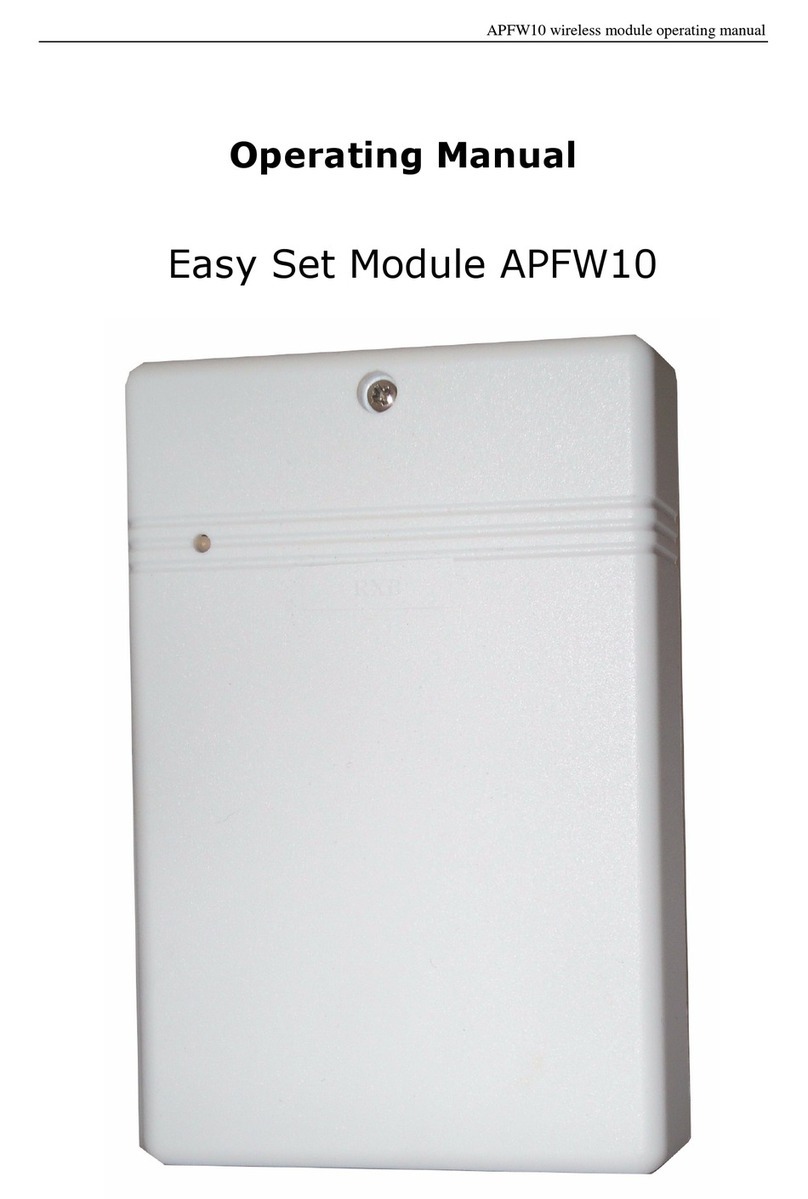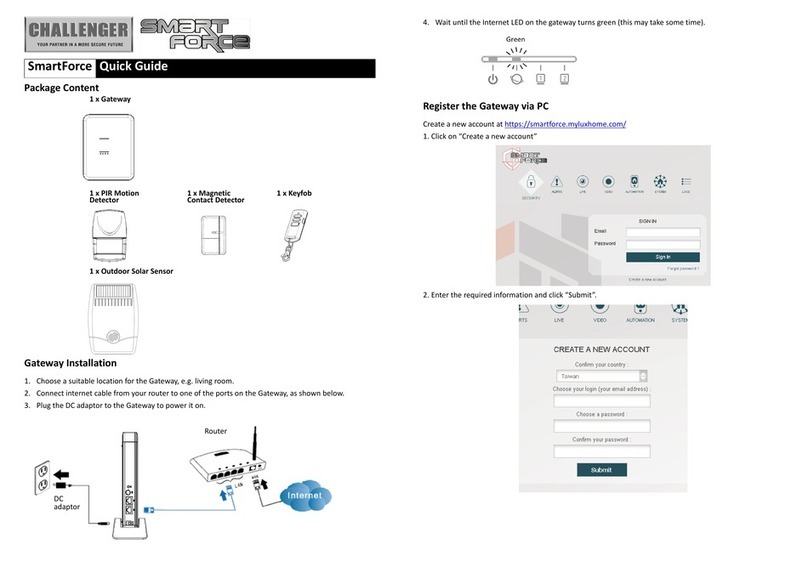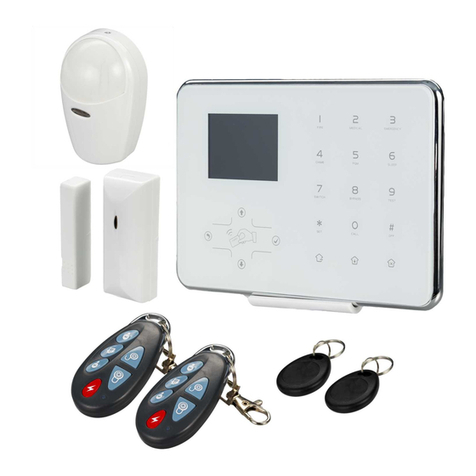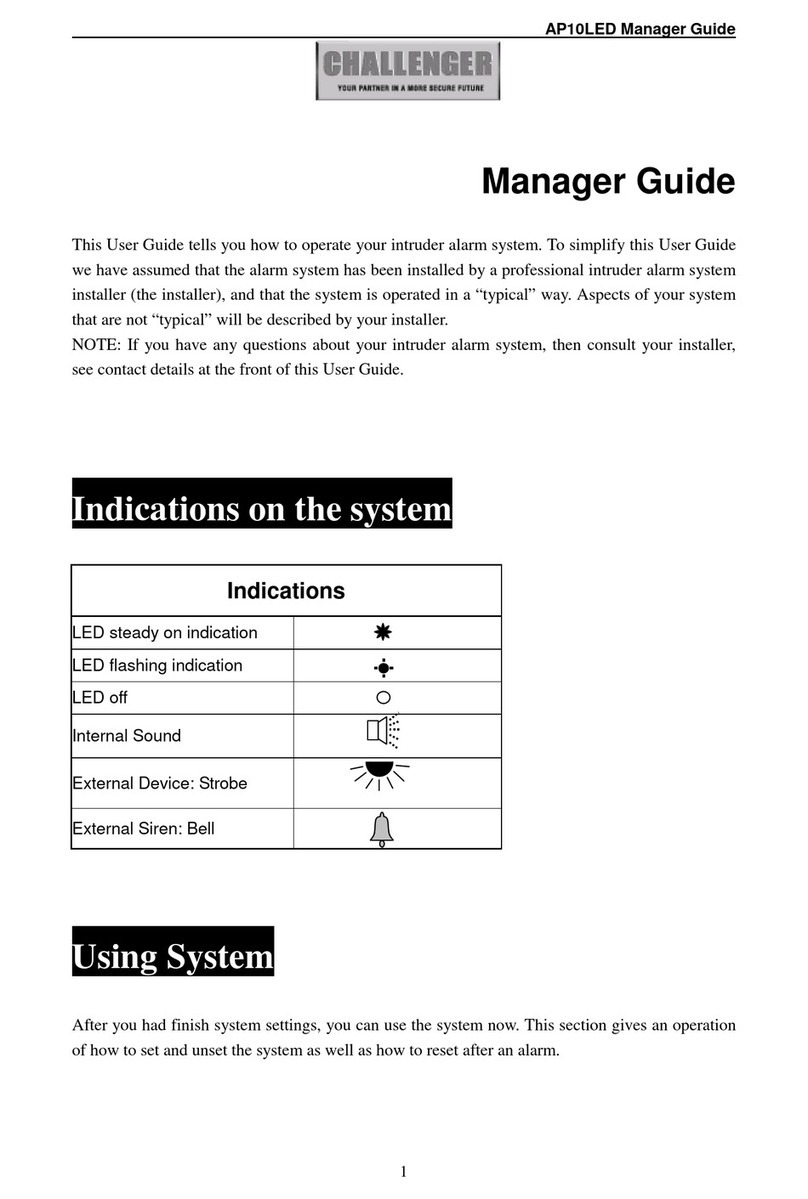
3
changed from illuminating steadily to
flashing, it means that the system enters
learning mode.
b. The unit has a 30-second duration to learn
the ID code.
c. If it fails to learn the ID code within 30
seconds, three short beeps will be heard. If
successful, longer beep can be heard.
11. In the event that any of the components are out
of order, you may clear all of the preset ID
codes all at one time. Procedure is listed
hereunder:
a. Press and hold the “learning”button for
more than 3 seconds. The unit has a
30-second duration to learn the ID code.
b. Within this 30 seconds, press the “learning”
button again for more than 6 seconds.
c. After clearing all of the preset ID codes,
the LED will flash every 2 seconds and one
short beep will be emitted at 10 second
intervals.
12. After selecting between the siren controlled
system and control panel based system by
setting jumper link JP1, be sure to disconnect
and then re-connect the power source.
After switching its mode, the preset ID code will
be no longer in existence. Resume ID code
learning process as prerequisite.
13. Upon completion of mounting the solar panel
on the wall with the tamper switch being
pressed firmly, the siren will flash about 3
seconds as an indication of normal operation.
14. After the preset alarm duration has expired the
alarm will stop and the system will
automatically reset. Subsequent activation
will again initiate an alarm condition. If an
alarm condition is initiated more than three
times then the alarm will be locked out and any
further alarm signals will be ignored until the
system is disarmed.
15. System off is to facilitate the installation of siren
& strobe without triggering an alarm condition
despite the detector or tamper switch being
triggered. Once the installation is complete
set the system to system on.
POWER-UP OF THE SIREN &
STROBE
The use of ear defenders is advisable when working
in close proximity to the Siren due to the high sound
level produced by this device if the siren is triggered.
1. Connect the 9V PP3 initial power battery to the
battery clip.
Connect the rechargeable battery to the charging
leads. Connect the Red lead to the Red (+ve)
terminal and the Black lead to the Black (-ve)
terminals.
Note: Once the batteries have been connected,
the Siren will be operational and it is important
that the solar panel receives sufficient light to
maintain the battery charge. The Siren should
not be operated repeatedly during installation
and testing, as this will rapidly drain the battery.
It is recommended that the Siren be left for at
least a day in order to charge the battery before
the system is armed.
2. Press the anti-tamper switch, the LEDs will flash
together to indicate that the unit is operational.
3. Hinge the front cover locating tabs over the top
edge of the back plate and carefully push the
base of the siren cover into place. Secure the
siren cover in place by refitting the fixing screw
in the bottom edge of the cover. Do not over
tighten the screw as this could damage the
thread.
IMPORTANT: Ensure that the rear tamper switch
is closed when you fit the siren cover to the back
plate (i.e. listen for the switch to click). If the
switch does not close, this will prevent the Siren
from operating correctly. If necessary, remove
the siren cover again and adjust the screw on the
back plate tamper plunger to ensure the switch
closes when the siren is secured in position.
4. If fitted remove the protective film covering the
Solar Panel.
